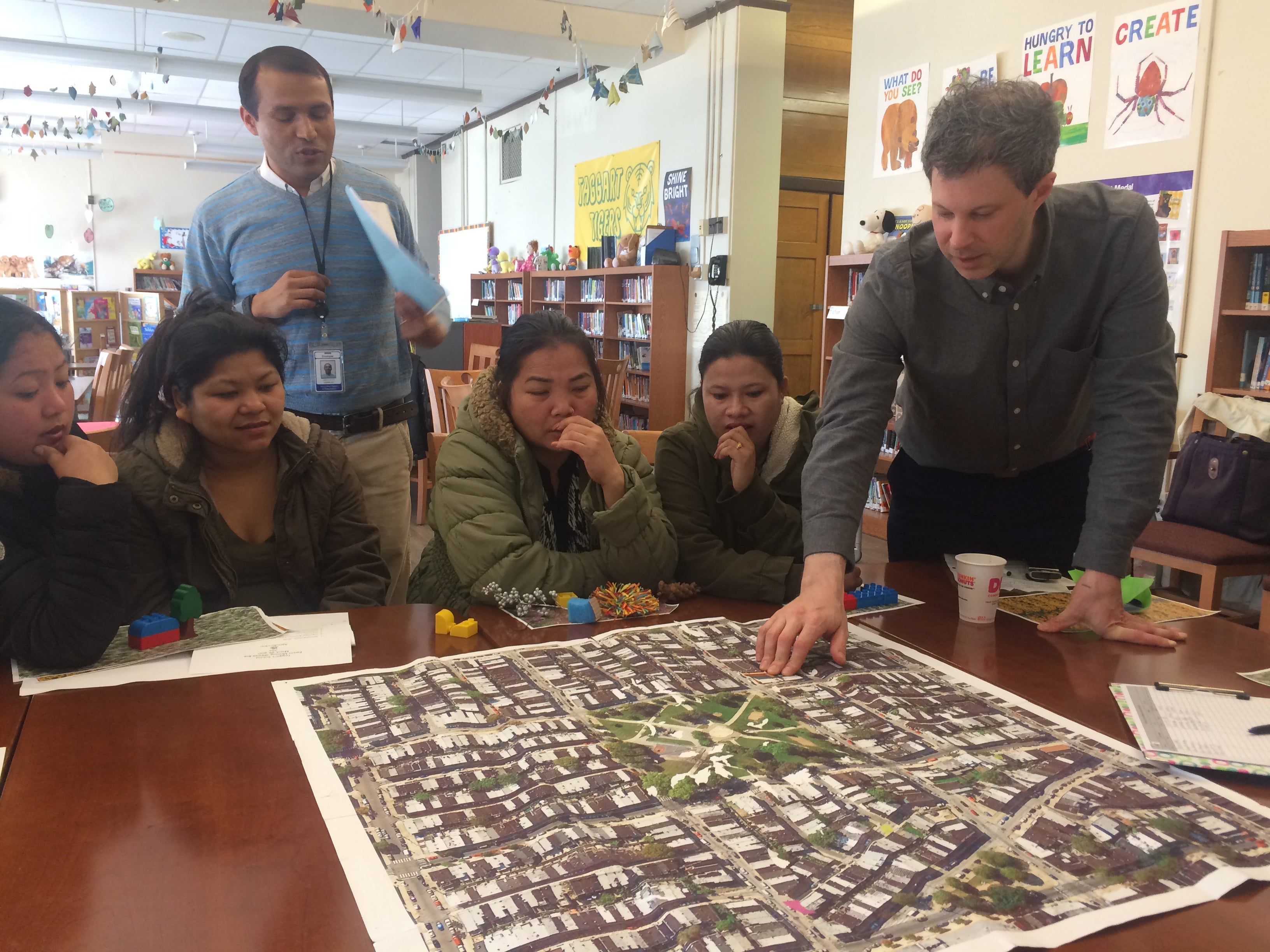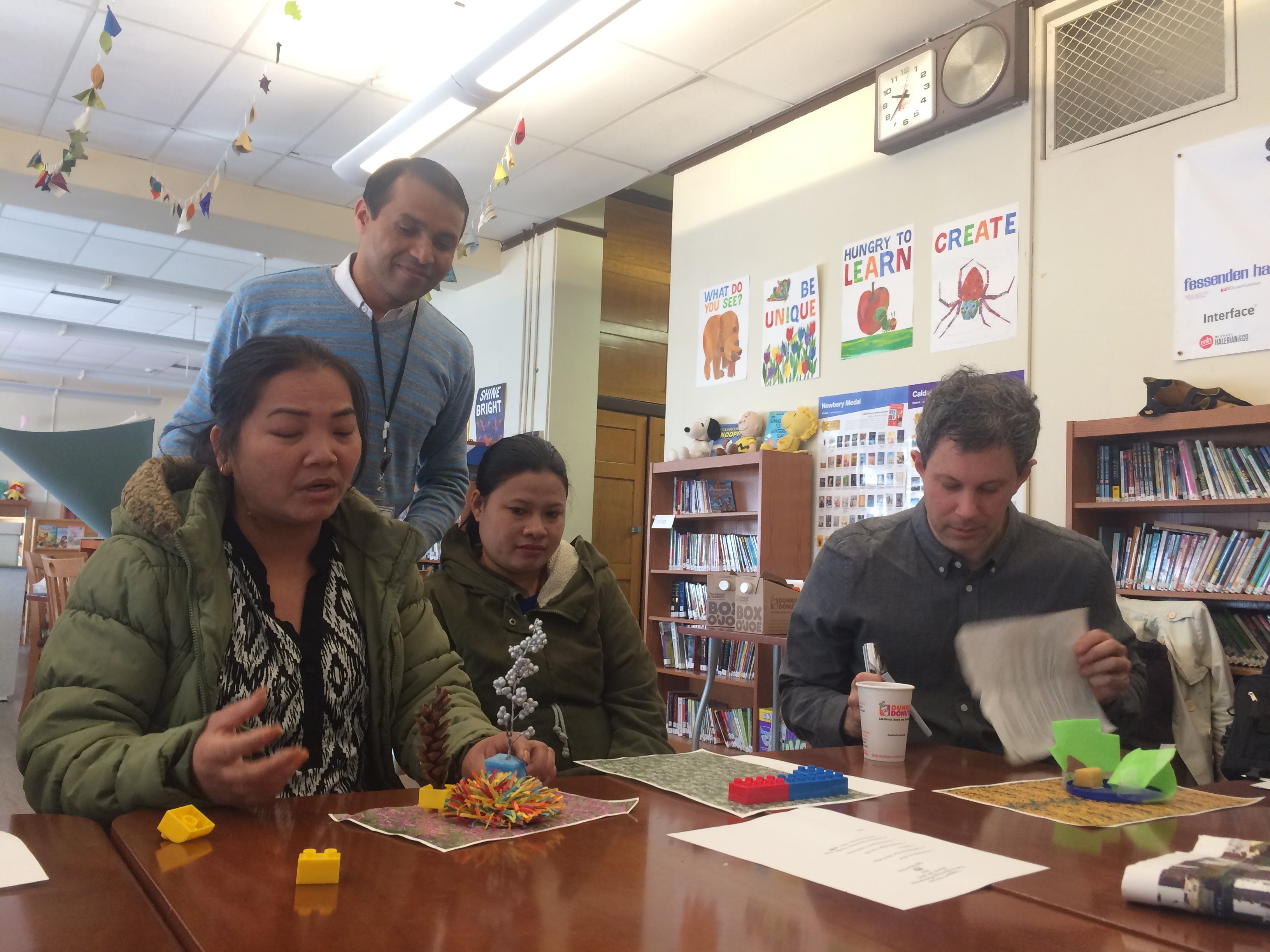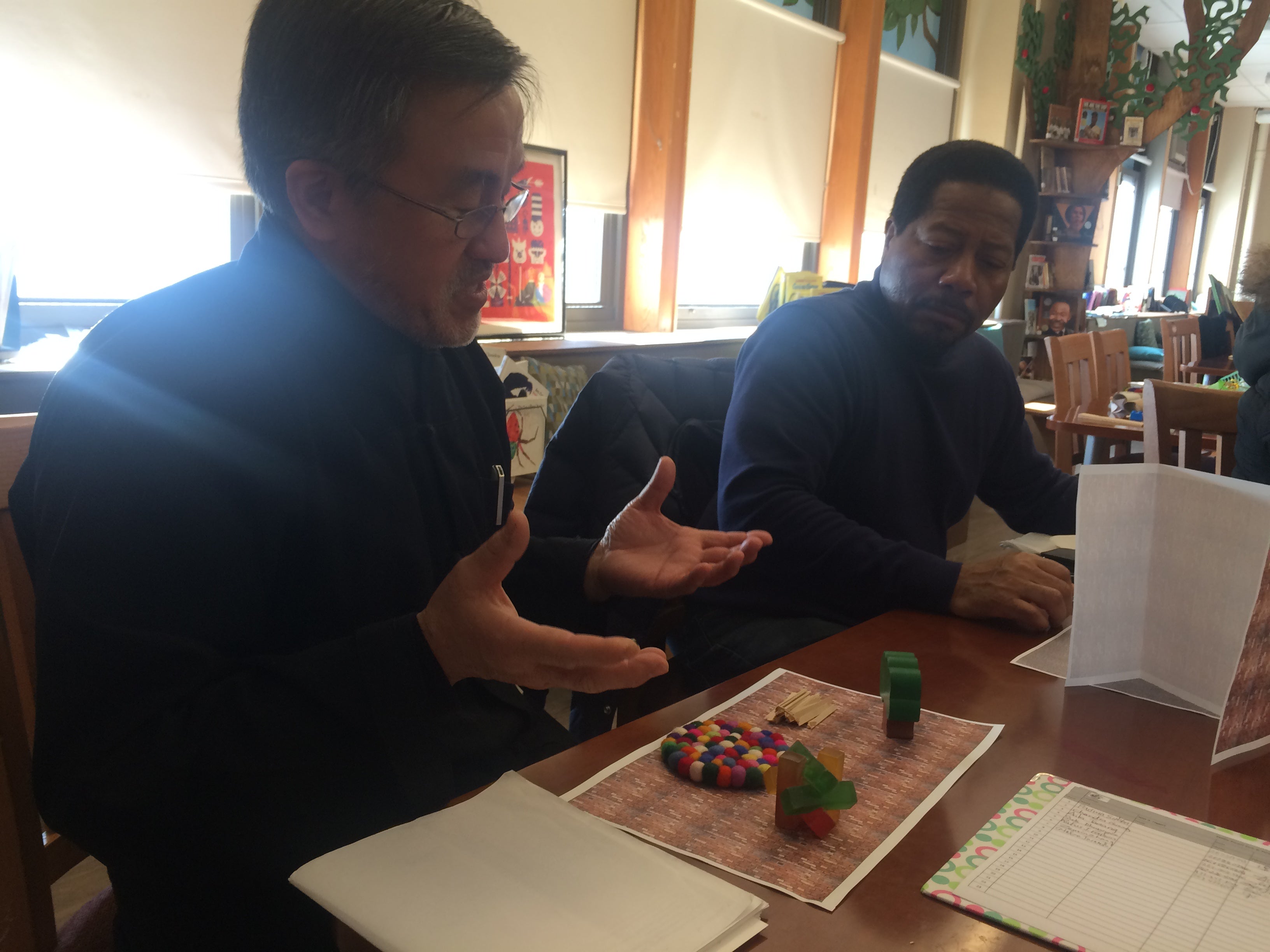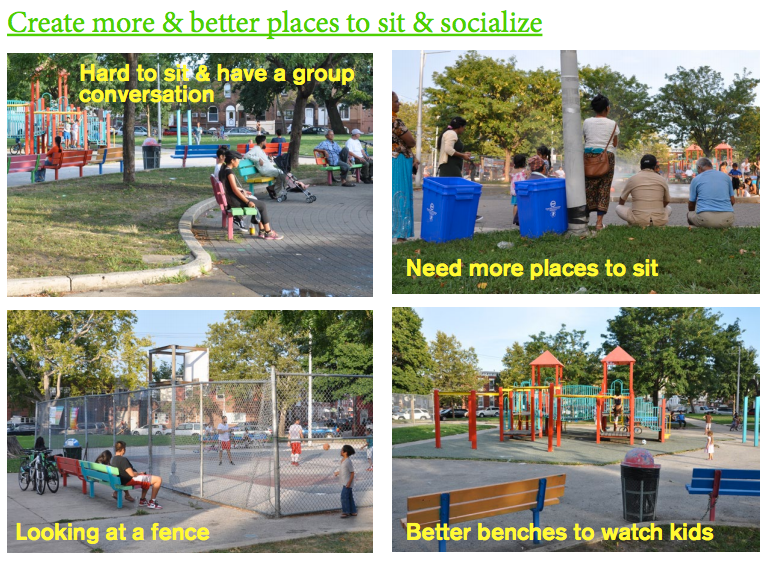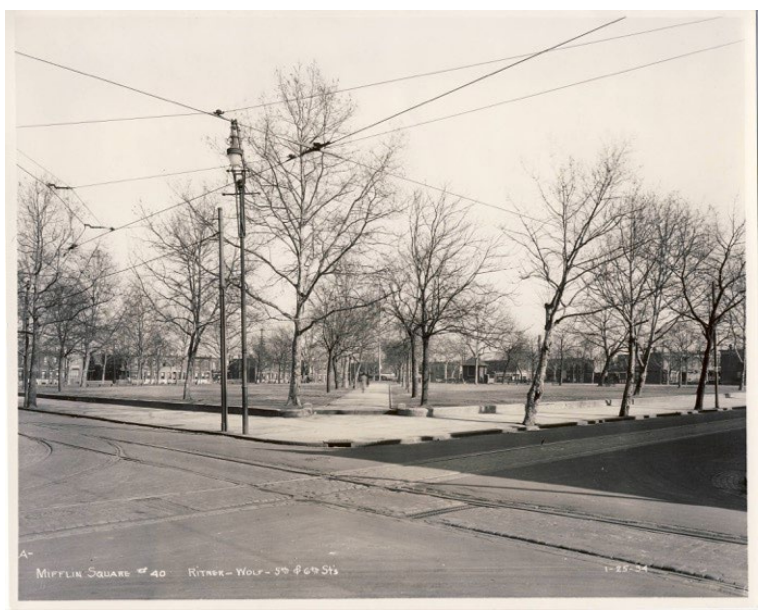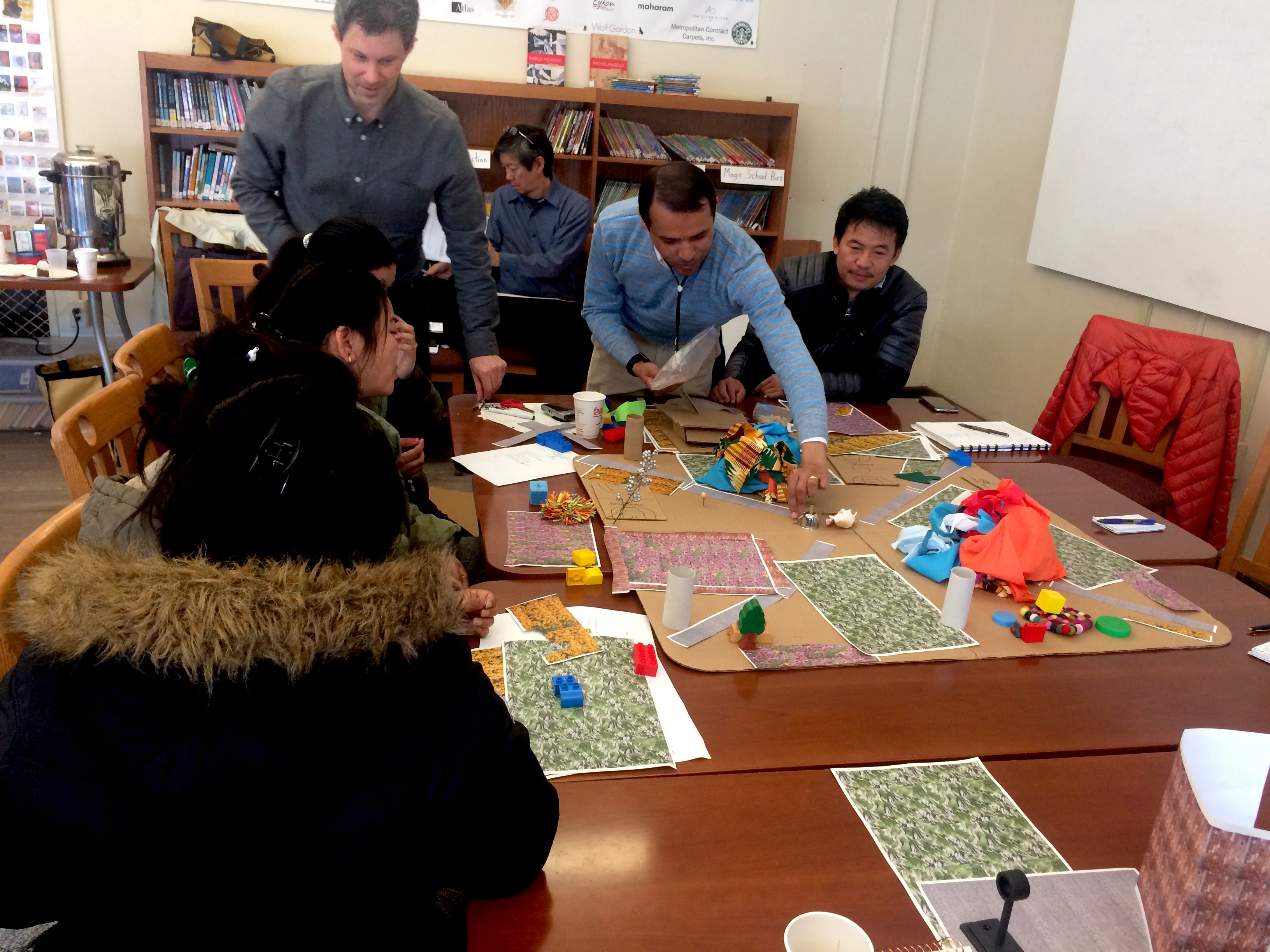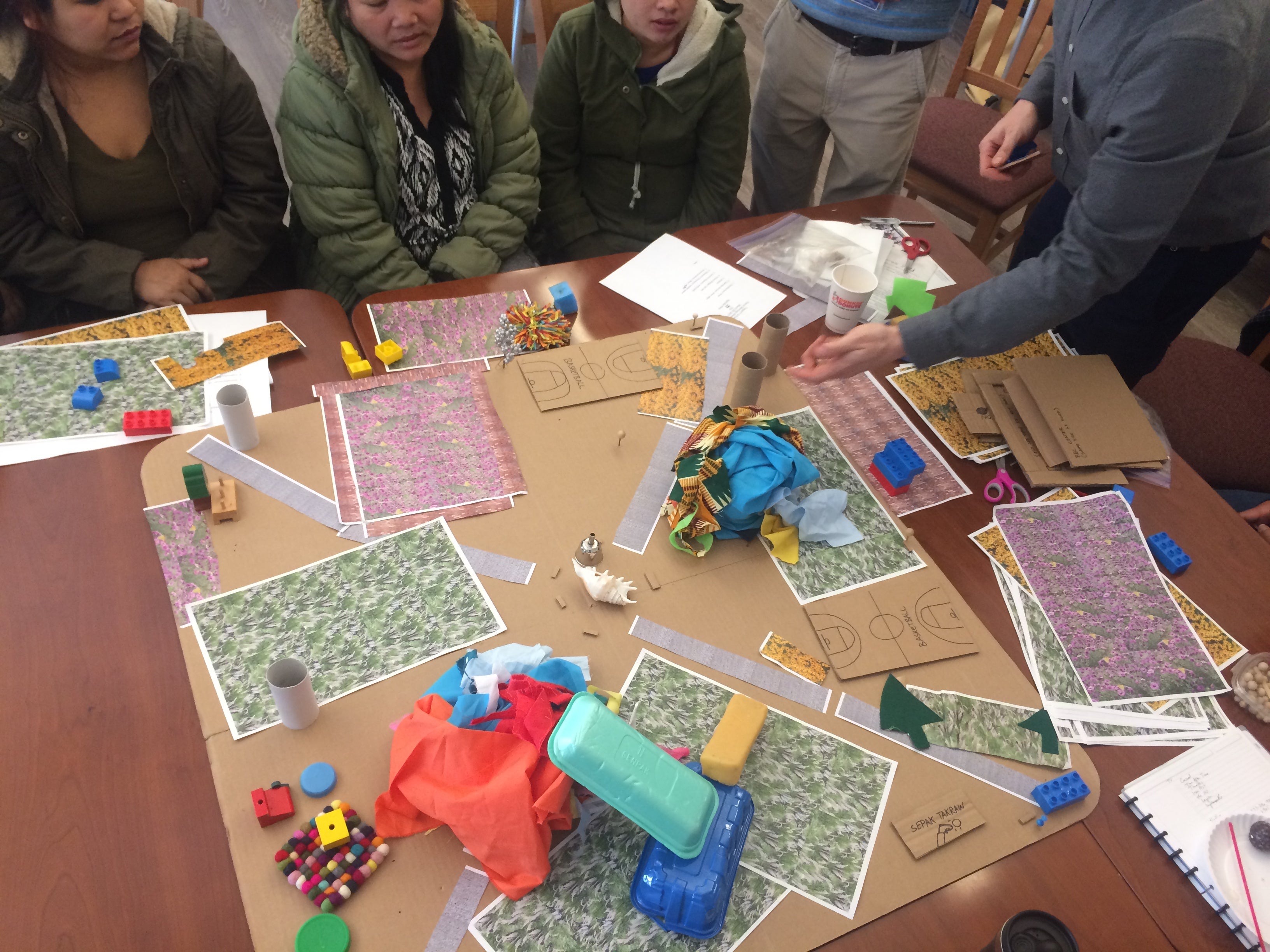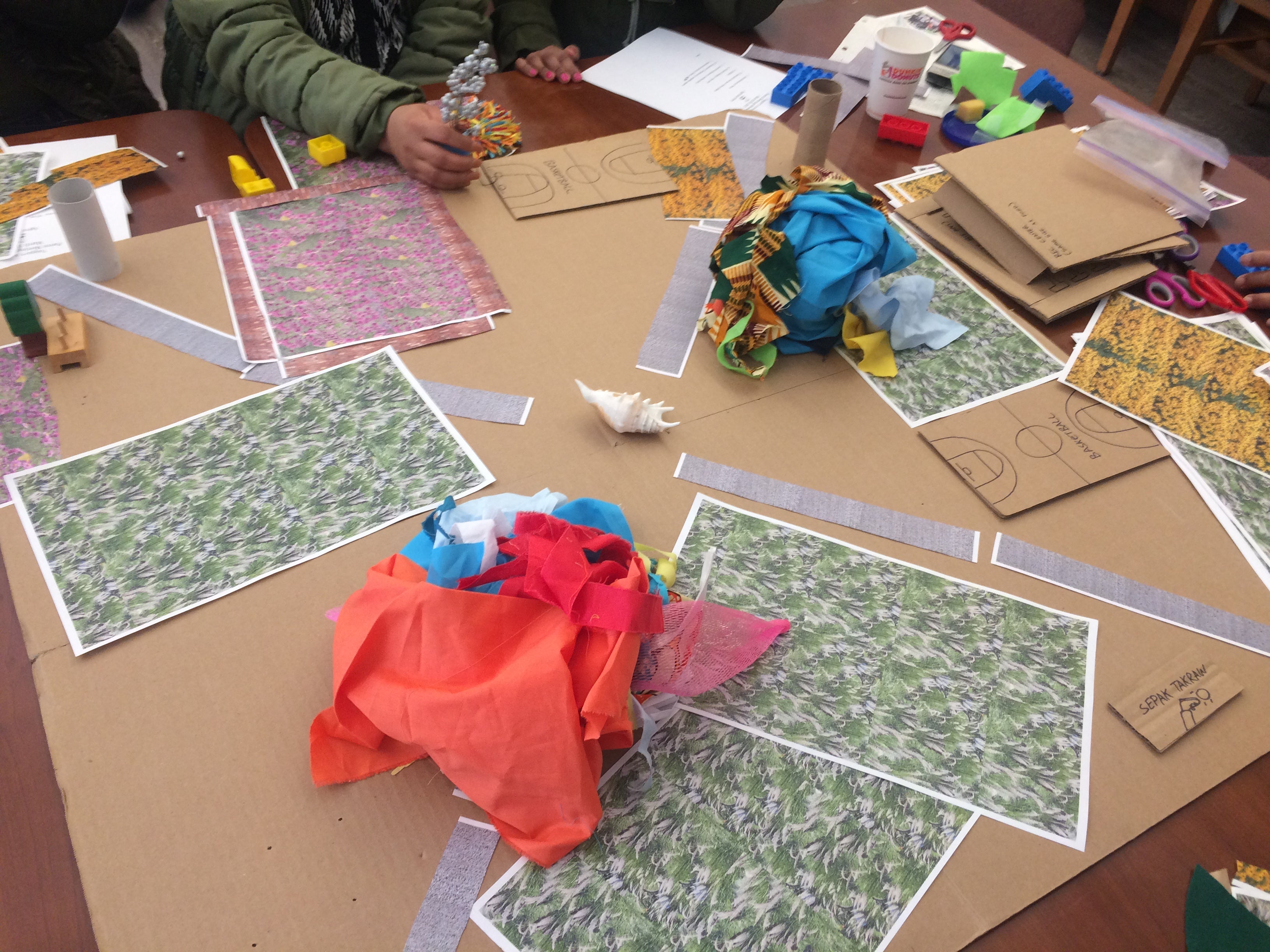Imagining a better Mifflin Square through memories and a cardboard model
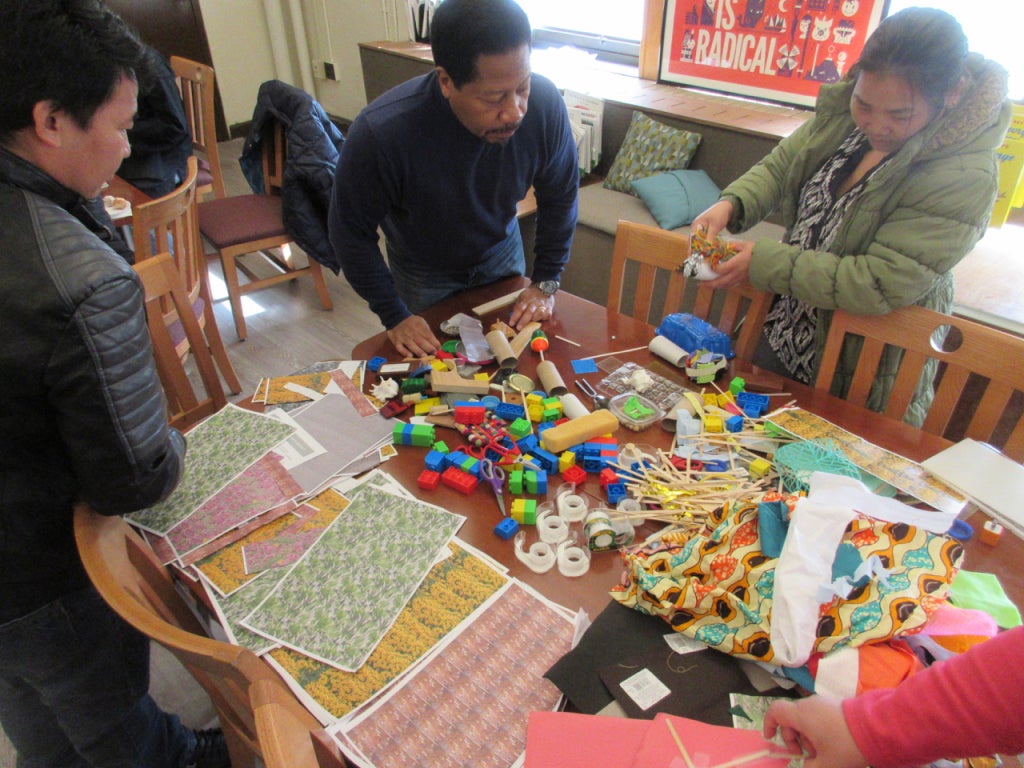
On a recent Wednesday morning, 10 adults sat around a big table at John H. Taggart Elementary School library, in South Philadelphia. They were using colored paper, pieces of cloth, little trees and toy figures to construct models of an outdoor space they remember enjoying.
“Remember what made you feel good and use some of the material to show us,” said Damon Rich, a planner who is leading the conversation around reimagining Mifflin Square.
This was the 9th of 10 public conversations held with small community groups so far about redesigning Mifflin Square plan, a process spearheaded last year by SEAMAAC and Friends of Mifflin Square Park. Rich’s design firm, Hector, was hired as a consultant last November. He’s the former planning director and chief urban designer for the City of Newark, and the founder of the Center for Urban Pedagogy in New York. In January, Rich started leading these conversations at schools, churches, and neighborhood associations.
Padma Subba said her model represented a park-like paradise in Philadelphia that helped her forget for a moment the pain of being far from home in Bhutan and her life as a refugee. Rufus Faison’s memory was from Francisville Playground near where he grew up, and Suk Dhungana’s model showed the school of the refugee camp where she lived in Nepal, surrounded by trees and grass.
“It was a poor life but we enjoyed playing there,” Dhungana said through an interpreter. “I hope that Mifflin Park would be green, so kids and play and enjoy.”
The exercise served as an icebreaker for a group that mixed refugees, new immigrants, and long-time residents who’ve never spoken to each other – sometimes, just because they can’t. Around Mifflin Square, located between 5th and 6th streets from Wolf to Ritner, neighbors speak more than 20 languages.
One of the bigger challenges for the community-led planning process so far has been to engage neighbors. The shadow cast by old-time racial battles and violence lingers around the park, and organizations like SEAMAAC and Friends of Mifflin Square Park have worked hard to make everyone feels included.
Another challenge will be to find ideas that a majority of the users of the park support. The meetings and surveys done so far, some of them compiled in a draft document, identify trash, alcohol consumption, and gambling as major problems. The wish list of changes to improve the park is topped by restrooms, followed by a better playground, more seating, trees and green areas.
“So our final challenge for the day is to have an idea for the park that would accommodate and welcome all the people in the park,” Rich said. “To help do that I made a model.”
Rich pulled out a model of the whole park at a scale of 1 inch to 10 feet, and pre-made cardboard park objects like benches, trees, restrooms, and sport courts, and other materials.
“Do we want a basketball court and a volleyball court? Do you want a Rec Center with a gym in it? Take your ideas and put them down,” Rich instructed. “Maybe you’d like to have stage, where people can dance or have events?”
Rich calls these conversations the imagination sessions. The plan is to bring the ideas he’s collected into a bigger conversation with the whole neighborhood and try some pilot projects during the summer. By the fall, the consultant team — Hector with Alexa Bosse & Marc Norman (design and planning), V. Lamar Wilson Associates (civic engagement) –, want to present a design concept to the community and finalize it by early 2018.
First District Councilman Mark Squilla has promised the group that if 80 percent of people agree to the plan, he would find funding for the project. The group is hoping one funding source could be the Kenney Administration’s Rebuild Program. If things go “very, very well” Rich estimates the whole process will take 3 to 4 years.
“I think people are becoming more engaged and people are getting more excited knowing that we have resources,” said Rebecca Wanner, a member from the Friends group. “We are at that point where we need to talk about all the things that are wrong, but we also have to let go of some of them to be able to look about the future.”
Rich said he’s fascinated by the challenge of redesigning a heavily used park where the design has barely changed in a hundred years even as the neighborhood has changed dramatically. Pew’s gentrification report was very eye opening for the team, he said.
“How do you strengthen and cultivate what’s here, which is so fascinating, how do you protect it from the potential disruption of this kind of investment and gentrification activity,” Rich told PlanPhilly. “I think people in this neighborhood don’t want to see happen what has happened in other places where people who have been there for a long time, work hard and organize and get public investment and make it nicer, and then maybe houses get more expensive, and if you are a renter maybe you have to leave.”
After a few minutes the model has a hill, a playground zone, two basketball courts, a water fountain and a few trees. Everyone gathers around it and have a group picture taken. The refugee group of ladies says the final model reflects what they want, but that two basketball courts is too much.
“The process will be good if they commit to what they want to do,” said Subba through the interpreter. “We have old people and kids that want to come and play.”
“It was rushed, but I think it was good to hear what’s important for newer immigrants and refugees, and trying to protect public land from gentrification as much as we can,” said homeowner Erme Maula. “I think this project can help bring this together.”
WHYY is your source for fact-based, in-depth journalism and information. As a nonprofit organization, we rely on financial support from readers like you. Please give today.



